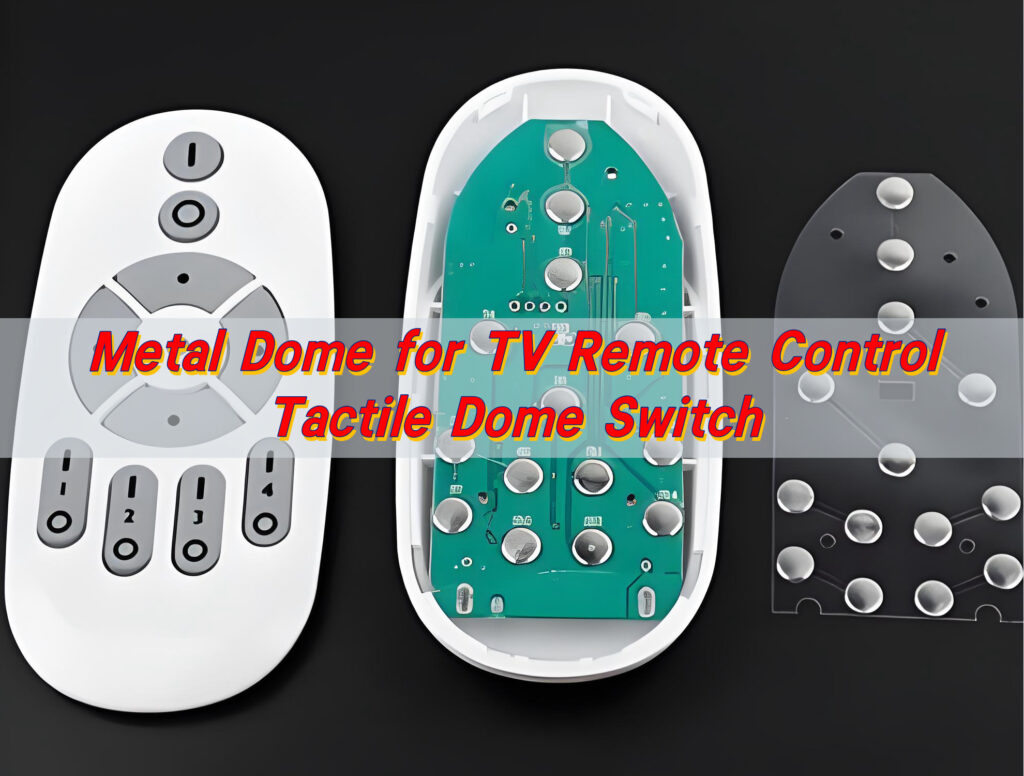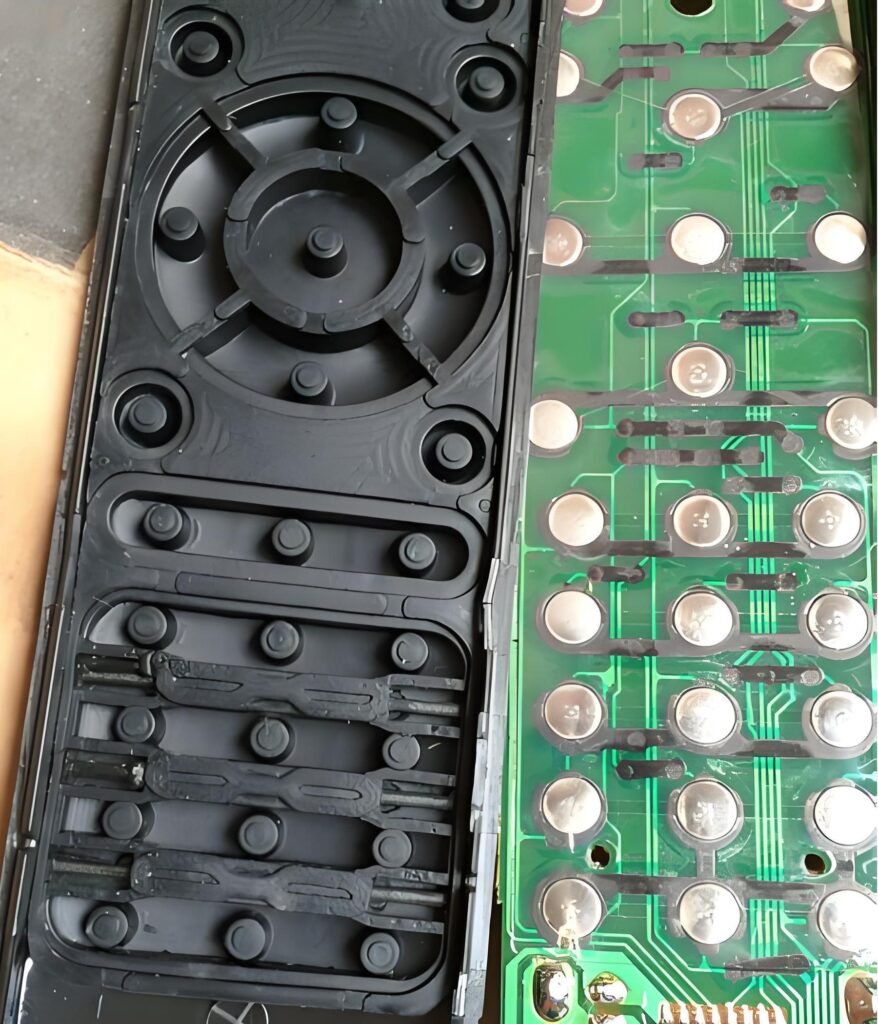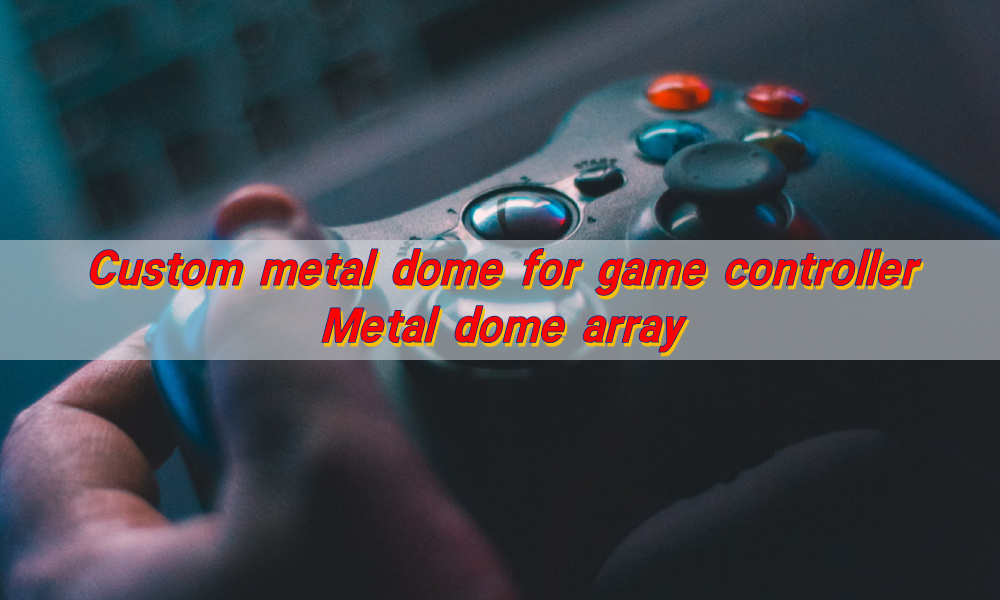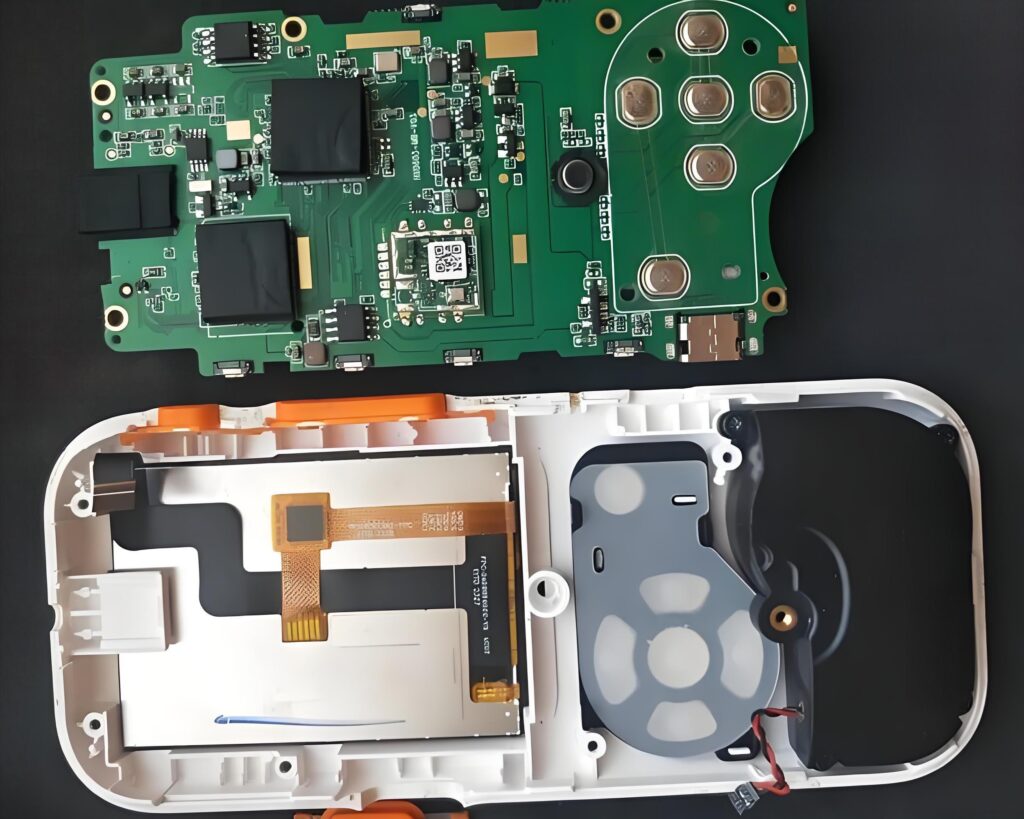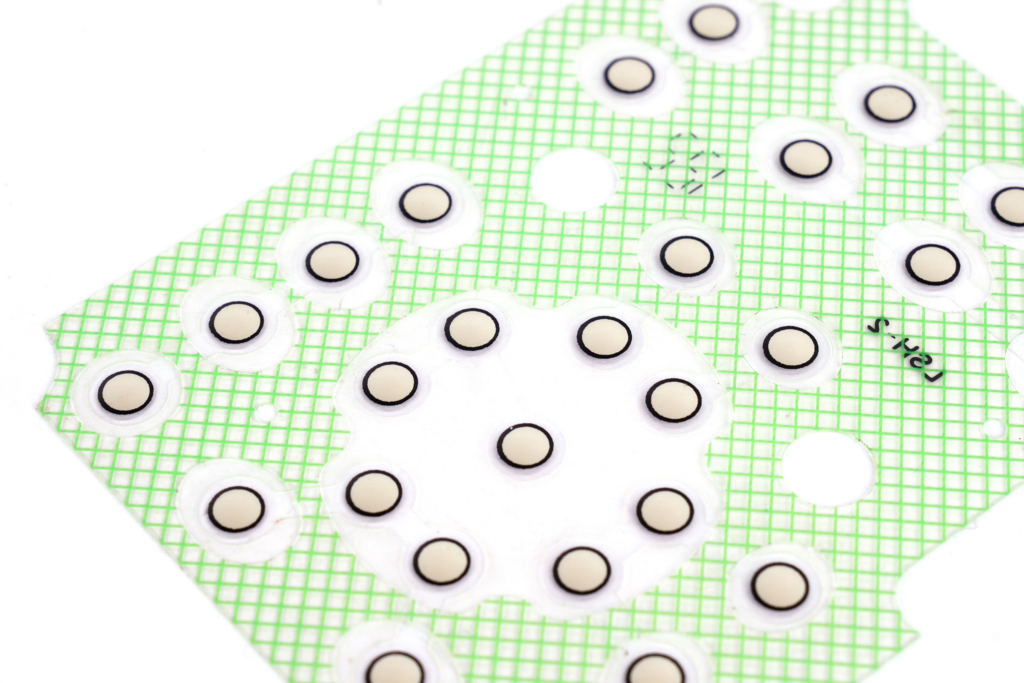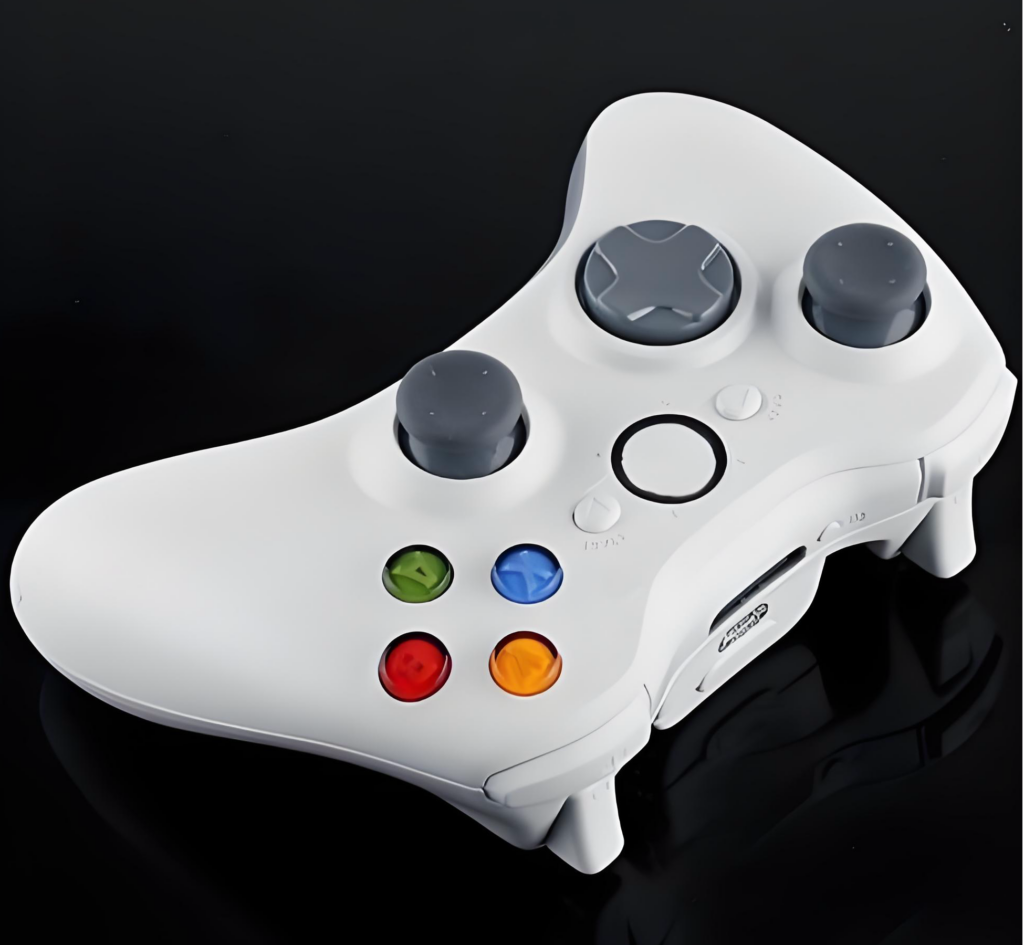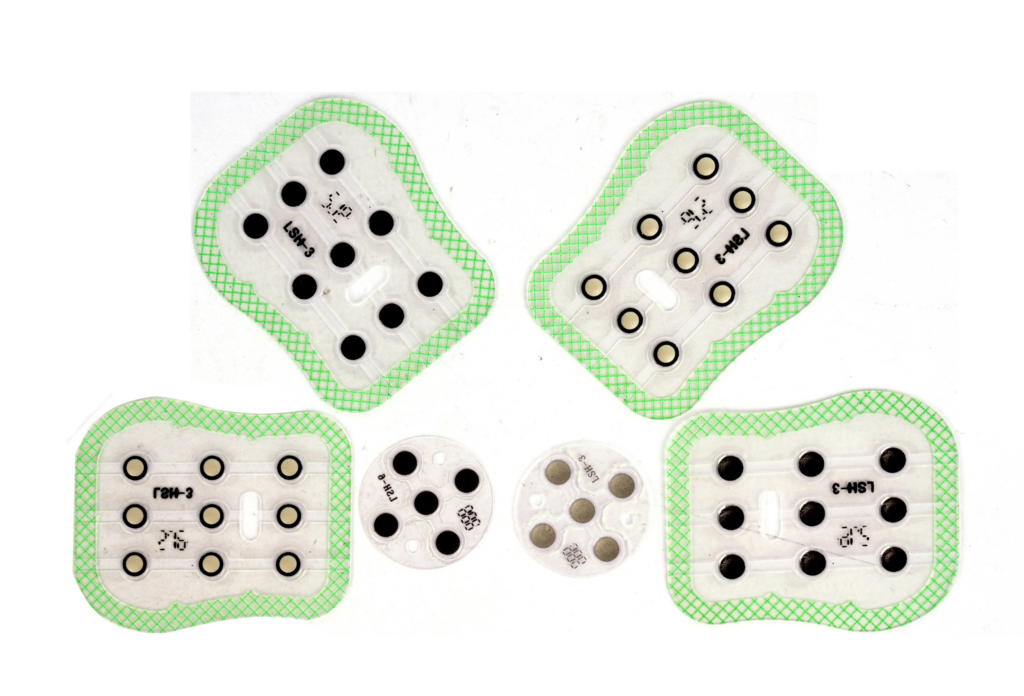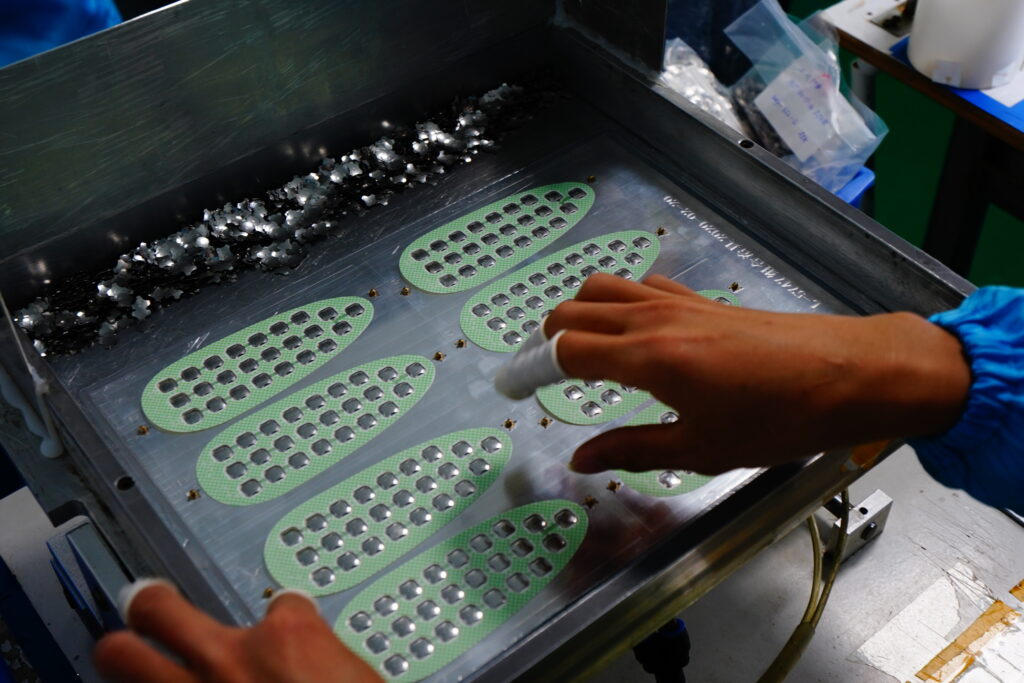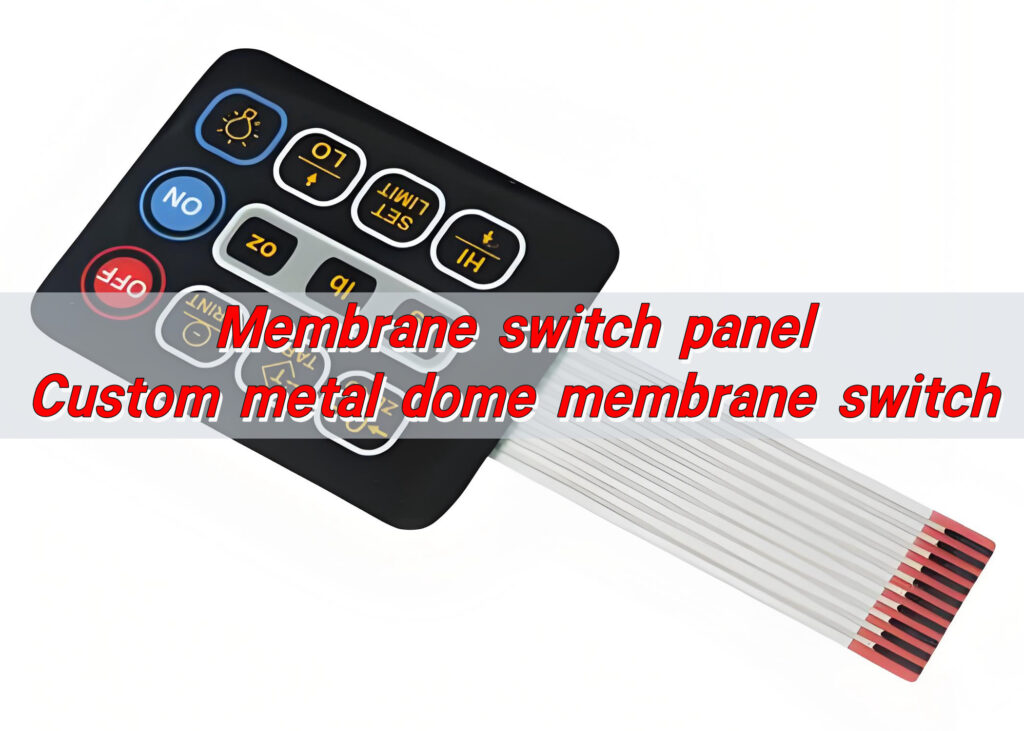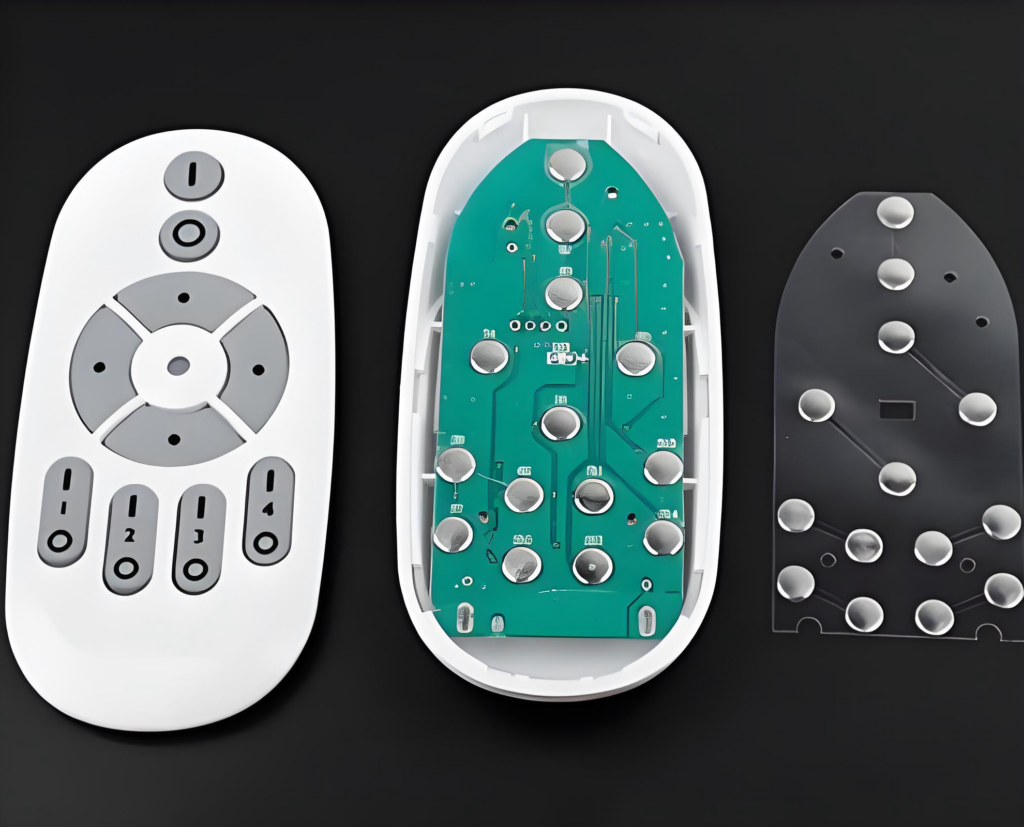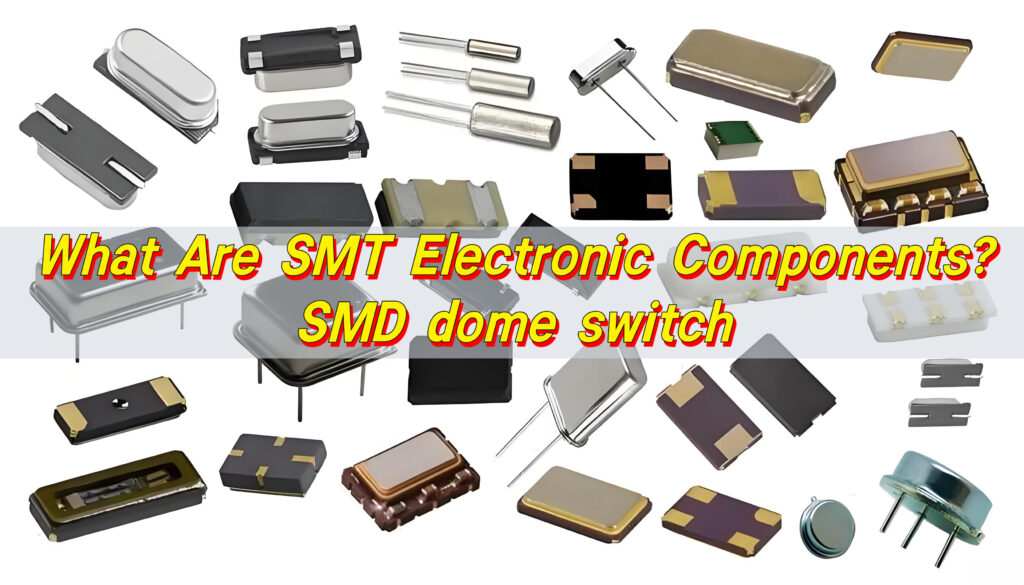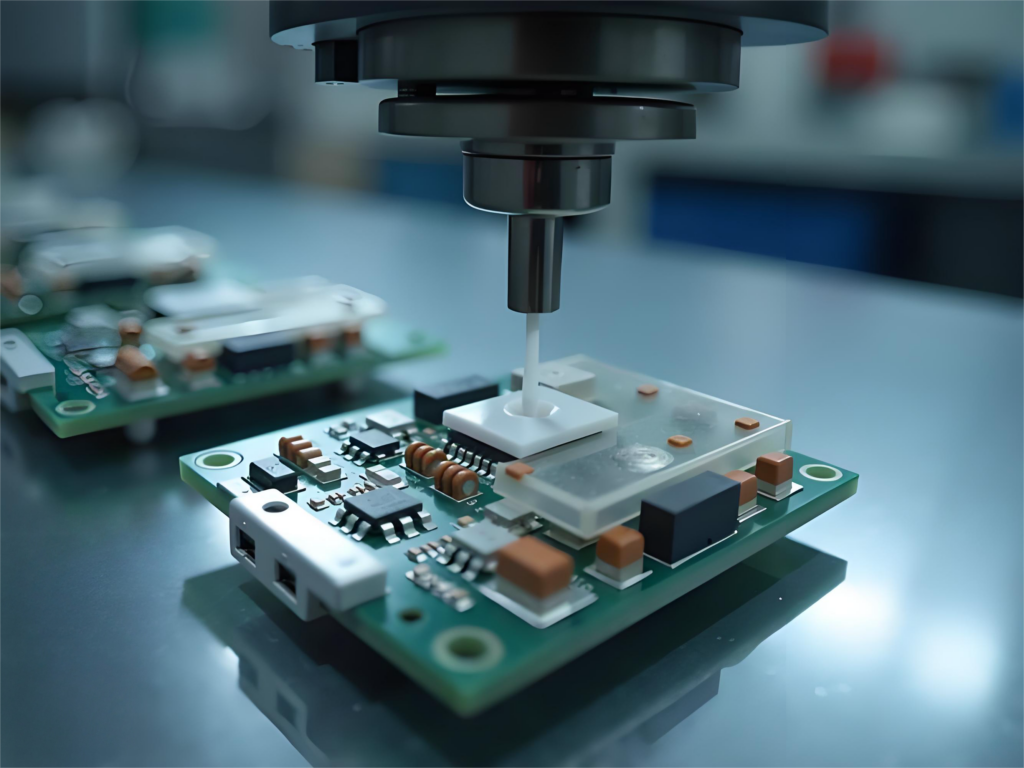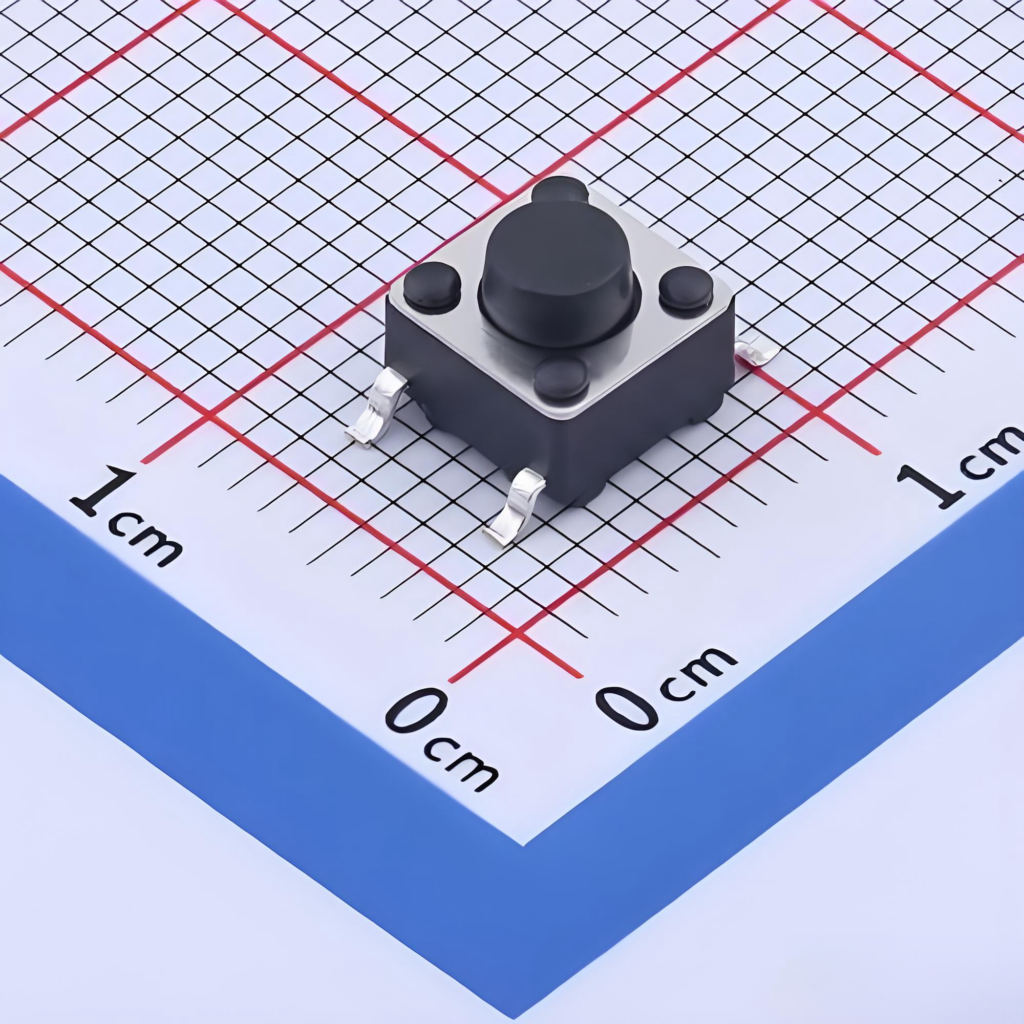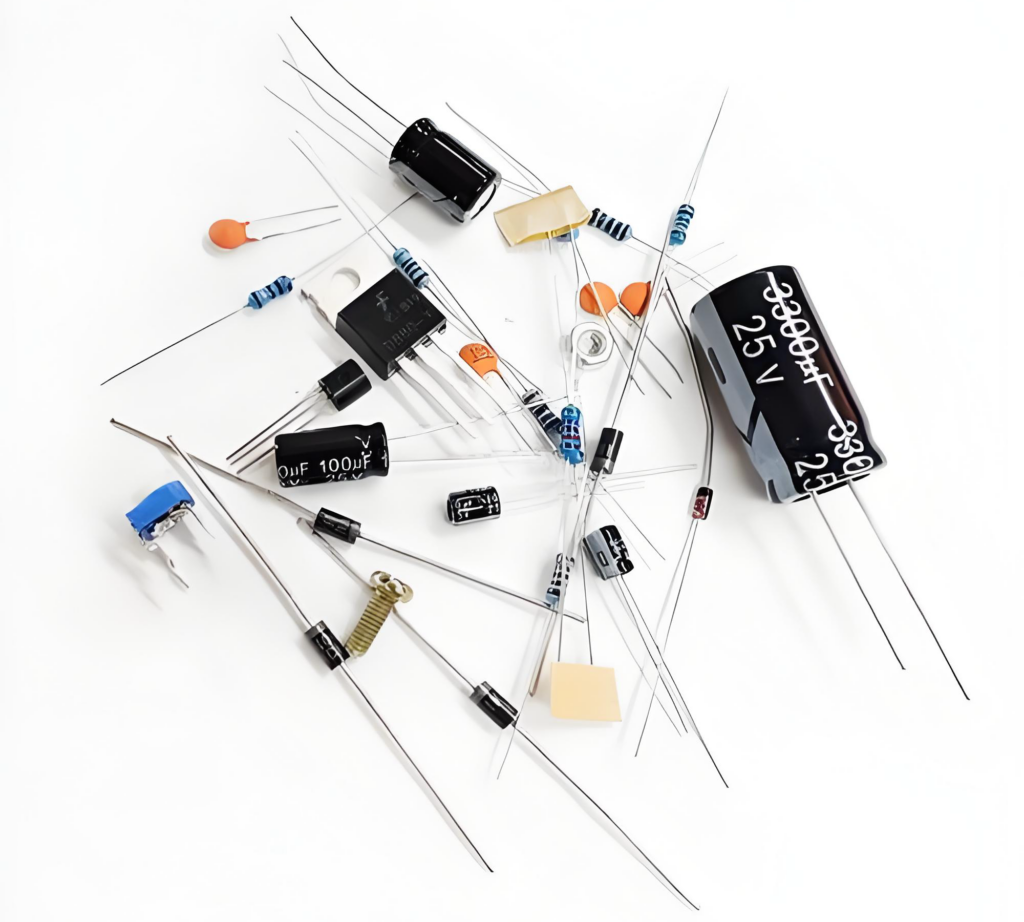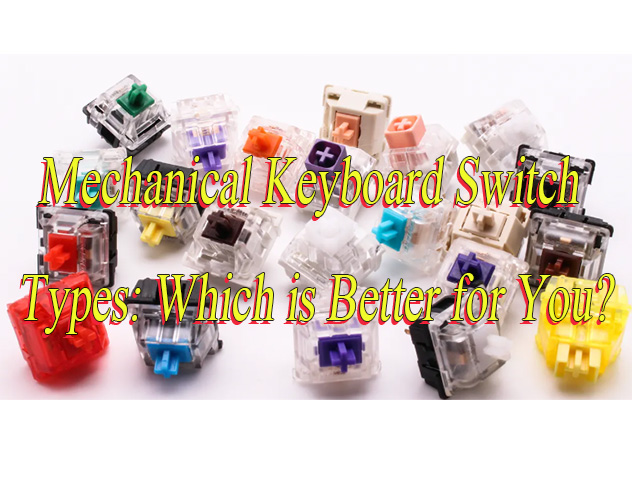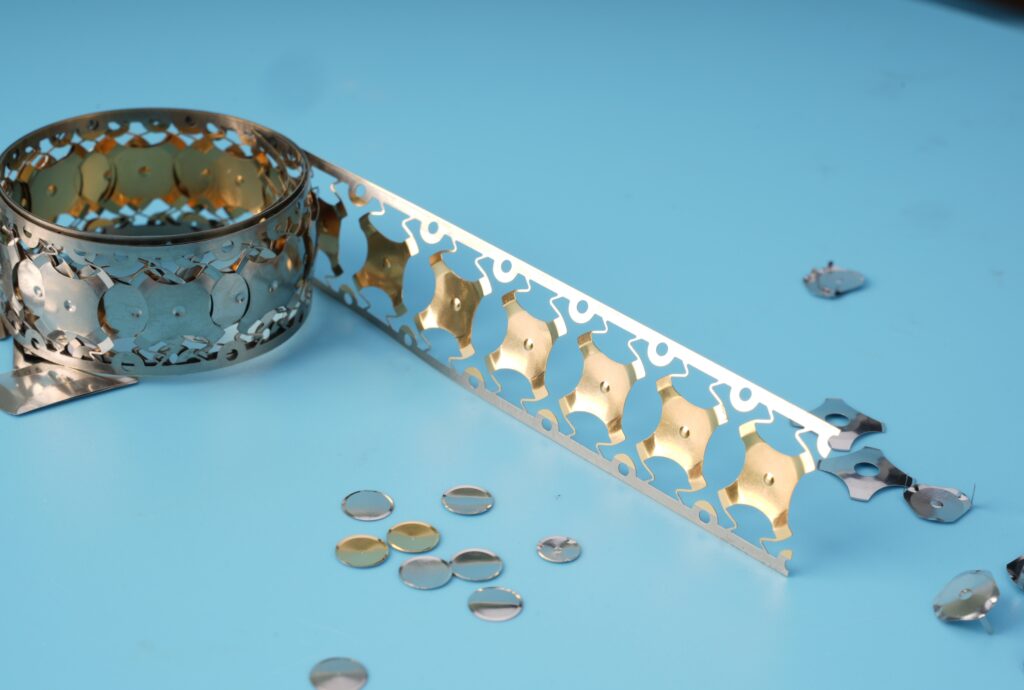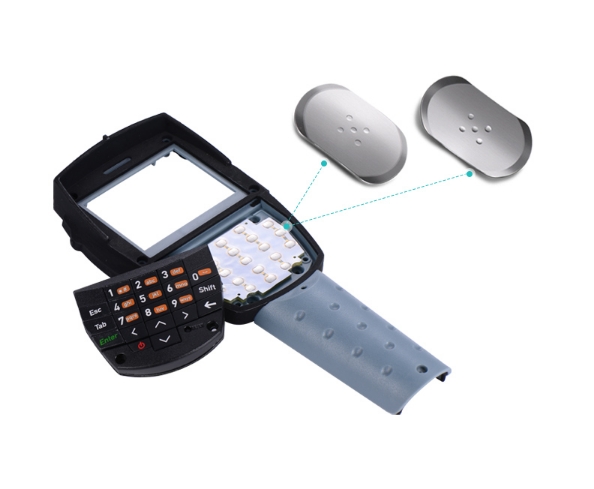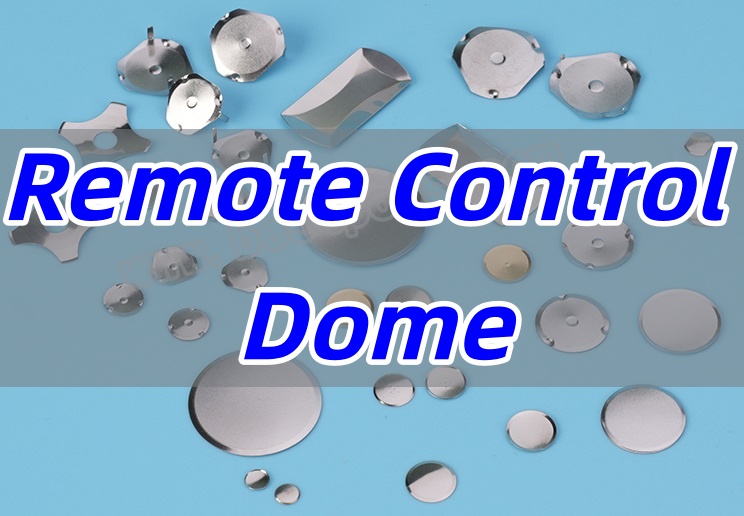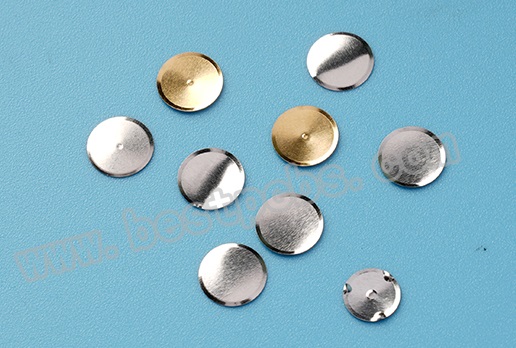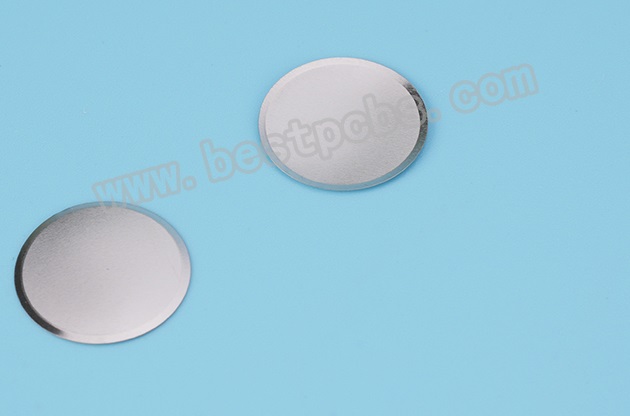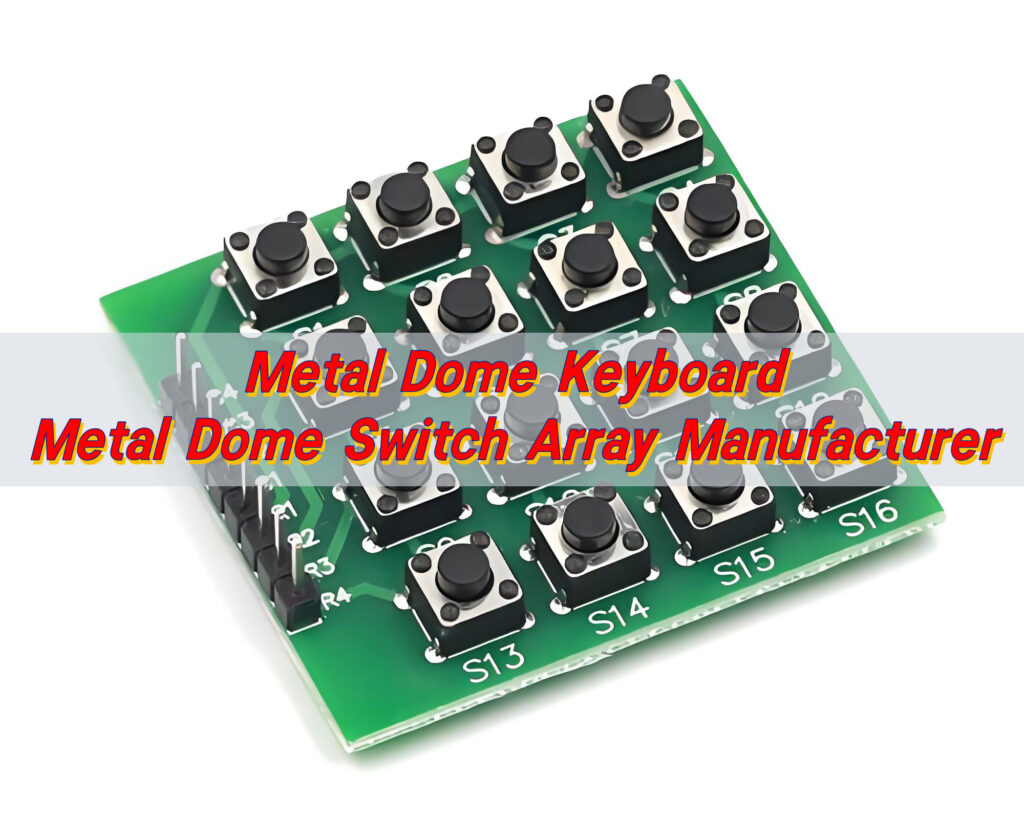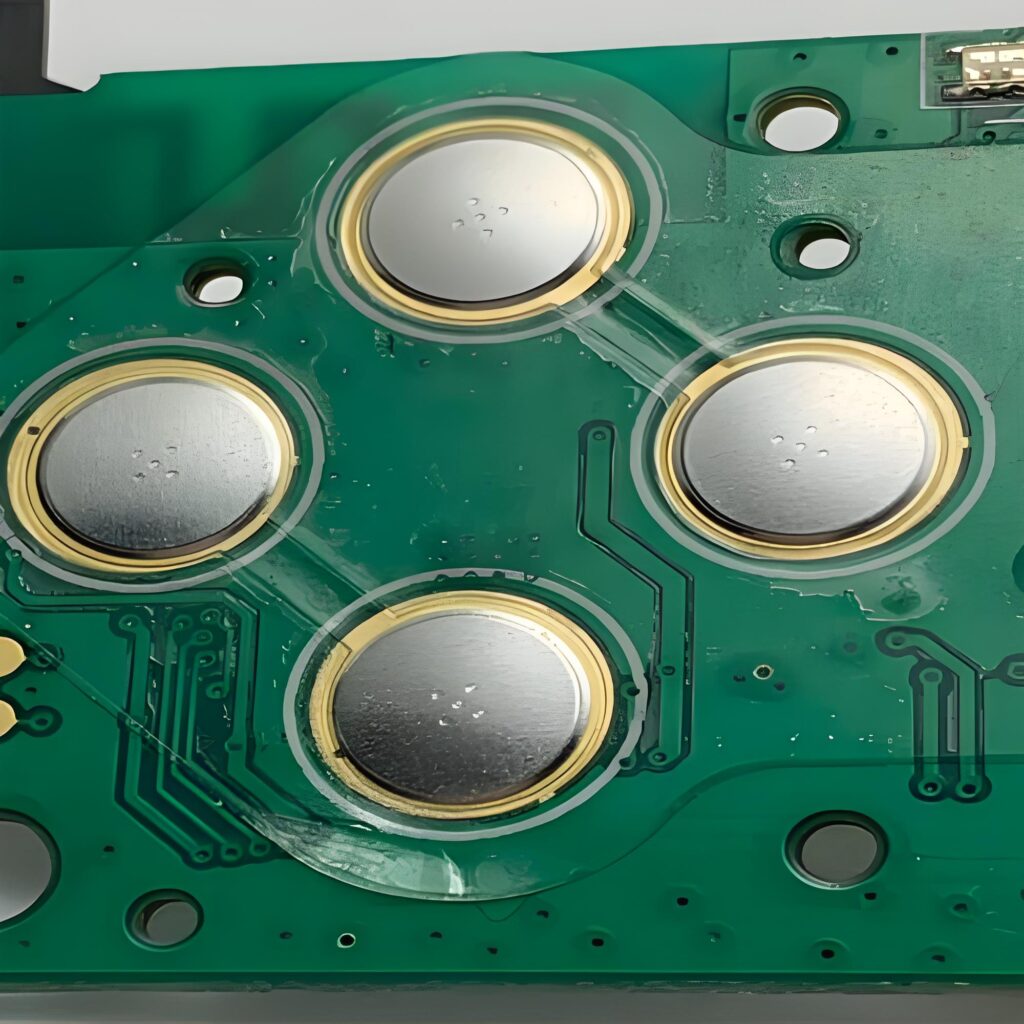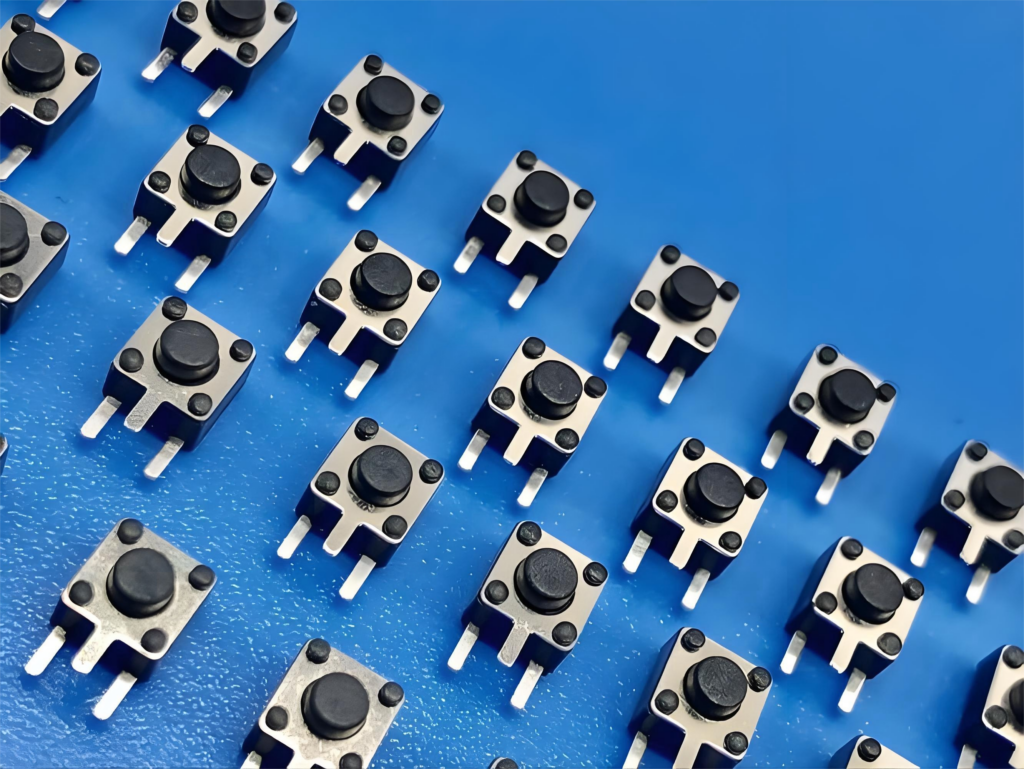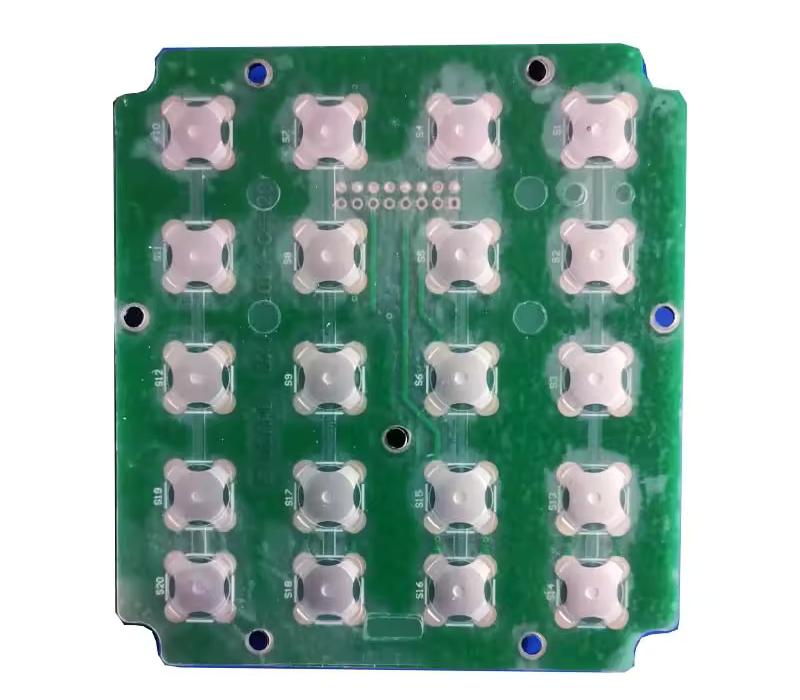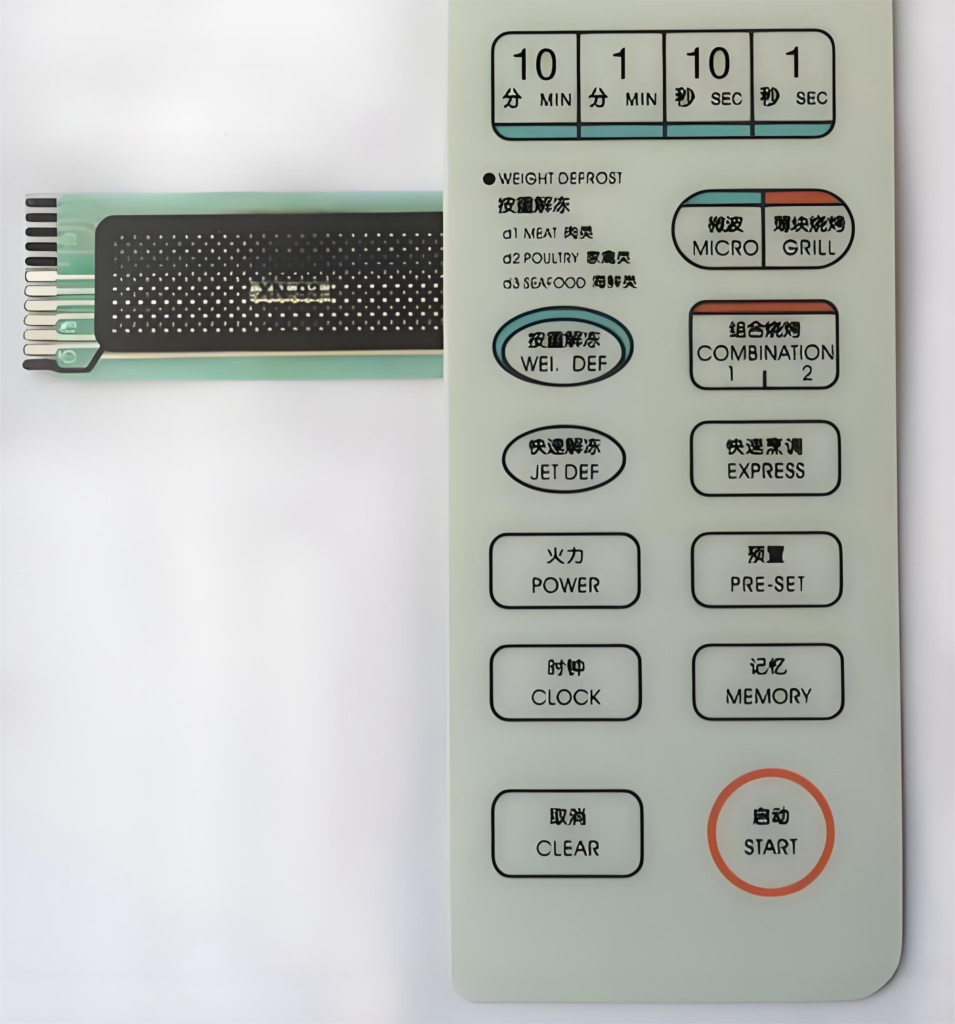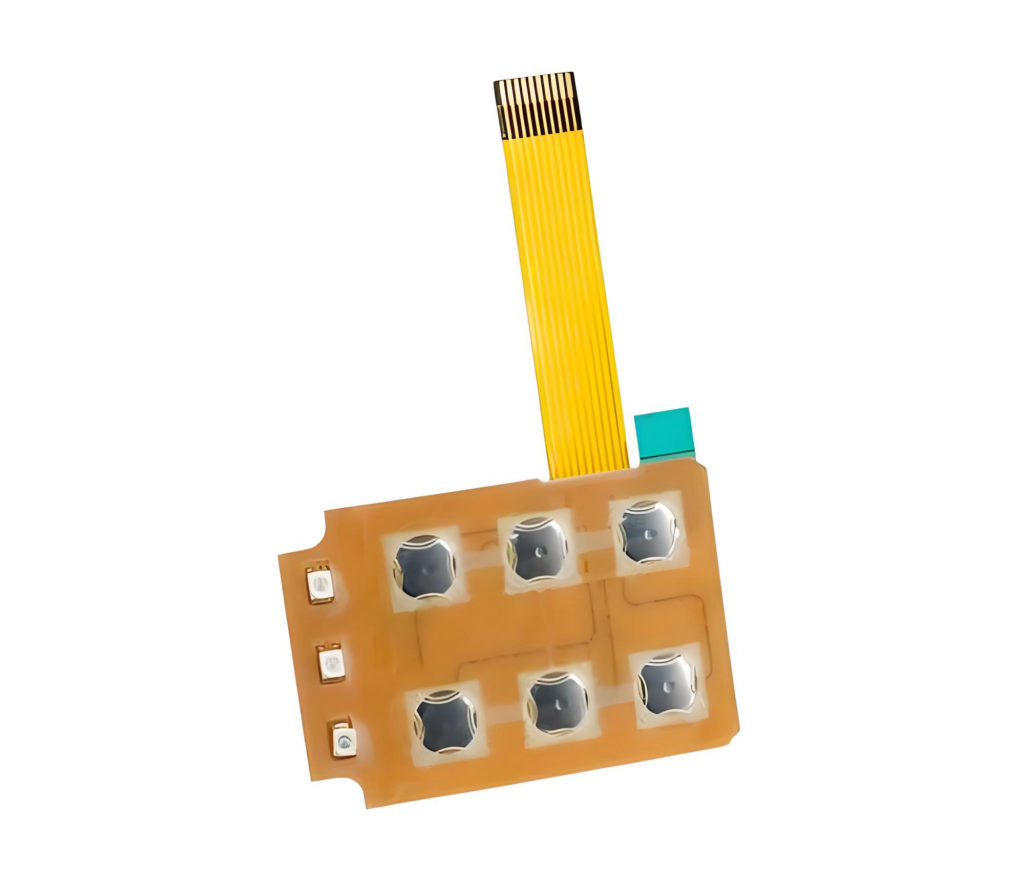What is a metal dome for TV remote control?
Metal dome for TV remote control is a tiny tactile component. It is made from stainless steel. It sits between the button top and the printed circuit board. When you press the key, the dome collapses. When it collapses, it completes the circuit. Then it springs back at once.
This simple motion creates a clean and reliable click. The click is not only a sound. It is also a physical signal that confirms your action.
Metal domes stand out due to their high precision. Their design supports smooth and fast movement. Their surface treatment helps resist dust, sweat, and light moisture. These features make them ideal for daily-use devices like TV remotes, set-top box controllers, streaming device remotes, and media control panels.
Inside a remote, each key may use a dome with a specific shape and force. These elements change the feeling of the click. Light force feels soft and easy. Higher force feels firm and strong.
How to customize metal domes for TV remote control layouts?
Every remote has a different layout. Some are simple, while others include many keys. To fit these layouts, metal domes can be customized. This helps every button align perfectly and respond smoothly.
Customization starts with size. Common diameters range from 4mm to 20mm. Smaller domes fit tiny keys. Larger domes are used for wide buttons like volume or channel keys.
Then comes shape. You can choose four-leg, round, triangle, or even cross-style domes. Each shape offers a different tactile feeling. Round domes are common for standard remotes. Four-leg domes give a sharp and centered click. Triangle domes feel snappy and quick.
After selecting shape and size, the next step is force. Designers can choose from low to high force levels. Lower force works well for sensitive buttons. Higher force is ideal for control keys that require firm presses.
Customization also includes placement on the array. Metal dome array helps align domes in fixed positions. The array ensures each dome stays locked in place. It also speeds up assembly and reduces labor mistakes.
When brands design a remote layout, they often look for a balanced mix of comfort and accuracy. Customized domes allow them to fine-tune each zone of the keypad. This results in a more polished and enjoyable user experience.
How to choose the right size metal dome for TV remote control?
Choosing the right size is key for both user comfort and functional stability. Size affects the movement, the click sound, and the sensitivity of the key.
- Small domes, such as 4mm or 5mm, are great for compact remotes. They help create a smooth and light click. They also work well in tight spaces. Yet they still offer a sharp response.
- Mid-size domes, like 8mm to 12mm, are popular for most TV remotes. They offer a balanced feel. The click is clear but not too strong. These sizes are easy for users of all ages.
- Large domes, 14mm to 20mm, feel very stable and bold. They work well for wide keys, such as directional pads or home menu buttons. They also give the remote a more premium feel.
When choosing the size, BEST Technology’s engineers also check the space inside the remote shell. They look at the shape of the key. They consider how the finger rests on the button. They also review the desired click sound level.
How does a tactile dome switch improve remote click feeling?
The tactile dome switch is the heart of the remote’s touch experience. It enhances the click feeling in many ways.
- First, it provides a clean snap. The snap gives users confidence. This prevents double presses. It also reduces input mistakes.
- Second, the tactile dome creates a natural rhythm. Each press feels controlled. The feedback comes at the perfect moment.
- Third, the dome gives a predictable response every time. No matter how often you press it, the click stays consistent.
The tactile dome also helps the key feel alive. It elevates the entire user experience with a crisp, confident, and delightful touch.
Why do metal TV remote buttons use metal domes?
Metal domes are widely used in metal TV remote designs for several strong reasons.
- First, they support long life. A well-designed dome can survive constant use for years. This makes the remote reliable for daily family use.
- Second, metal domes offer sharp tactile feedback. Users love this. It creates a sense of certainty. It feels smoother than rubber-based designs. It also avoids the mushy feeling that reduces the sense of quality.
- Third, metal domes help maintain stable electrical contact. Their structure collapses in a controlled way. This helps reduce signal noise. It makes the remote work more accurately.
- Fourth, metal domes resist common household conditions. They resist temperature changes. They resist oils and fingerprints. They resist light humidity. This helps the remote keep working in different environments.
- Fifth, metal domes allow slim and modern remote designs. They take little space. They work well with low-profile structures.
All of these benefits make metal domes a smart and reliable choice for remote control manufacturers.
Which dome force fits TV remote control keys best?
The force of the dome plays a major role in how the remote feels. Dome force is measured in grams. Light force might be around 120g. Medium force might be around 180g to 250g. Higher force can reach 300g or more.
Light force works well for soft keys. It creates an easy click. This is great for seniors or users who prefer gentle control. Too light can feel accidental, so a balanced choice is important.
Medium force is the most common for TV remotes. It feels natural. It offers a crisp snap. It avoids fatigue during long use. It also helps keep the keys stable.
High force is suitable for keys that need stronger confirmation. For example, power buttons or special function keys. A firm press makes these actions feel intentional and secure.
Many brands combine different dome forces in one remote. This helps shape a richer user experience. For example, navigation keys may use medium force. Volume keys may use higher force. Playback keys may use lighter force.
The right dome force improves comfort, accuracy, and satisfaction.
How does a circular remote control key with metal dome work?
Circular remote keys are popular because they look clean and modern. A circular remote control key with metal dome uses a round dome under the button top. When you press the circular area, the dome collapses evenly. This produces clear tactile feedback.
Circular domes offer great stability. Their shape helps distribute pressure smoothly. Users can press the key from any direction, and the response stays the same.
This shape is ideal for directional keys, OK buttons, and menu controls. It keeps the action centered. It also delivers a soft yet snappy click. The dome pops back to its original shape quickly. This keeps usage fast and fluid.
Many premium remotes use circular domes because they feel natural under the finger. The curved edge of the button top aligns well with the rounded snap point of the dome. This harmony improves both comfort and performance.
How do tactile dome switches extend remote lifespan?
A tactile dome switch is designed for endurance. It lasts far longer than many other switch types. It extends remote lifespan in several ways.
- First, metal domes maintain stable performance even after many presses. They do not soften or lose their shape easily. This helps the remote keep a fresh, crisp feeling for a long time.
- Second, the dome’s stainless steel material resists corrosion. It stays firm even under long use. This protects the internal contacts and reduces long-term wear.
- Third, the dome collapses in a controlled pattern. The movement is precise. This reduces stress on the circuit board. It also reduces mechanical friction, which helps the switch last longer.
- Fourth, metal domes are sealed inside the remote. They stay protected from dust and dirt. This helps prevent failure or signal interruption.
- Fifth, dome arrays make the dome placement stable. The array film locks each dome in place. This reduces misalignment. It also protects the dome from uncontrolled bending.
These features help create a remote that stays dependable for years. The tactile feeling remains sharp. The response stays quick. The user experience stays satisfying.
Conclusion:
Metal domes play a huge role in shaping how modern TV remotes feel and respond. They create a confident click. They help every button produce a clear and stable signal. They also support long-term durability and premium performance
If you want to improve remote sensitivity, boost lifespan, or create a more engaging click, metal domes offer a powerful and reliable solution.
For more details or custom support, contact us anytime at: sales@metal-domes.com


